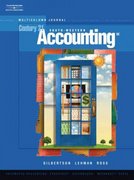The auditors of Cohen Logistics encountered the following situations while adjusting and closing the books at February
Question:
a. The company bookkeeper made the following entry to record a $2,790 credit purchase of supplies:
1. Correct the error by reversing the incorrect entry and preparing the correct entry on February 28. Include explanations.
2. Prepare the correcting entry, dated February 28, without reversing the incorrect entry. Include an explanation.
b. A $540 debit to Accounts Receivable was posted as $450.
1. At what stage of the accounting cycle will this error be detected?
2. Describe the technique for identifying the amount of the error.
c. The $3,480 balance of Utilities Expense was entered as $34,800 on the trial balance.
1. What is the name of this type of error?
2. Assume this is the only error in the trial balance. Which will be greater, the total debits or the total credits, and by how much?
3. How can this type of error be identified?
d. The accountant failed to make the following adjusting entries at February 28:
1. Accrued service revenue, $10,800.
2. Insurance expense that had been prepaid, $3,160.
3. Accrued interest expense on a note payable, $6,240.
4. Amortization of equipment, $22,250.
5. Earned service revenue that had been collected in advance, $8,130.
Compute the overall net income effect of these five omissions.
e. Record each of the adjusting entries identified in item d. Include explanations.
f. The revenue and expense accounts after the adjusting entries had been posted were Service Revenue, $199,995; Wages Expense, $78,325; Amortization Expense, $30,540; and Insurance Expense, $1,860. Two balances prior to closing were N. Cohen, Capital, $137,725, and N. Cohen, Withdrawals, $111,000. Journalize the closing entries.
Accounts receivables are debts owed to your company, usually from sales on credit. Accounts receivable is business asset, the sum of the money owed to you by customers who haven’t paid.The standard procedure in business-to-business sales is that...
Step by Step Answer:






